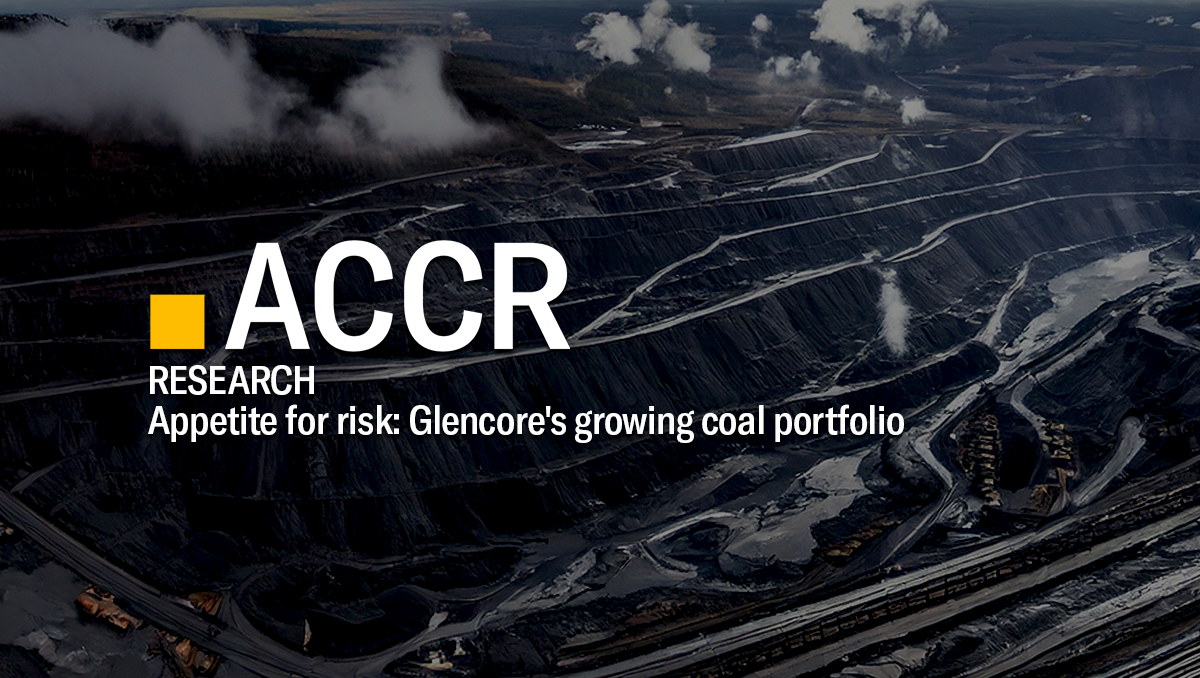Publication Appetite for risk: Glencore's growing coal portfolio
Executive Summary
In 2024, coal made up nearly 50% of Glencore’s industrial EBITDA. With the acquisition of Elk Valley Resources' (EVR) metallurgical coal mines and an intention to expand coal production by almost 30%, Glencore’s already large coal exposure is set to grow towards 2050, with a number of assets operating beyond this time.
Across all International Energy Agency (IEA) scenarios, however, coal energy is projected to enter terminal decline before 2030. This means that even in a non-Paris aligned world, Glencore will be navigating an operating environment where less thermal coal is required. The future for metallurgical coal is also narrowing; all IEA scenarios project long-term decline for met coal, and policies supporting low-carbon steelmaking are accelerating across the globe.
Yet, Glencore has to date failed to articulate a plan for how it will manage the risks of this growing coal exposure. Its commitment to “a responsible phase-down of our thermal coal production”[1] sits at odds with plans to grow production.
While the company has touted EVR as a source of cashflow[2], this acquisition brings additional coal exposure and inherited risks which need careful management.
Glencore’s Chief Executive says “cash is king” [3], but for long-term shareholder value, an appetite for cash must also come with an appetite for managing risk.
Key Points
- Glencore’s already large coal exposure is expanding into the headwinds of the global energy transition – where even with non-Paris aligned outcomes, less thermal coal will be required. Yet Glencore has not demonstrated a plan to manage this risk.
- Chinese coal demand has a material impact on the global coal trade, and as one of the world’s largest coal exporters, Glencore’s business is exposed to changes in demand. With renewables forecast to become increasingly important to China’s energy mix, and coal facing more competition and displacement from renewables, the outlook for sustained coal demand over the medium to long-term remains uncertain.
- Glencore's recent acquisition of EVR increases the company’s met coal reserves fivefold, adding to its coal exposure – in particular, due to its long-dated coal mines. Glencore's recent Annual Report continued to exclude the EVR assets from group climate reporting, which means investors have limited insight into how the company is progressing towards its emissions targets.
- ACCR modelling suggests that if Glencore did integrate EVR into its group climate reporting and adjusted its baseline in accordance with the Greenhouse Gas Protocol, then it would be unlikely it could achieve its 2030 emissions reduction target.
- The large-scale water contamination from EVR’s metallurgical coal mines means that Glencore has inherited responsibility to administer one of the world's largest water quality management plans, with ongoing treatment costs. Future additional costs and legal and regulatory action remains a possibility.
Key stewardship considerations for investors
- Nine months post the finalisation of the EVR acquisition, the clock is ticking on when Glencore will incorporate all its coal assets into a consolidated view of its forward emissions profile. Investors require an updated disclosure to provide clarity on the company's ability to meet its emissions reduction targets while properly incorporating its sizable and long-dated EVR coal mines. Glencore’s 2030 target may now be out of reach.
- Growing headwinds for Chinese coal demand in future, including the increasing competitiveness of renewables due to cost reductions and policy changes, are worth considering alongside Glencore's coal outlook.
- All the IEA scenarios project long-term decline for thermal and metallurgical coal. The most recent projections account for the real-world policy developments that are closing the gap with national pledges. Investors would benefit from understanding how Glencore is responding to growing policy support globally for reducing coal energy dependency and for green steel production pathways that don't require met coal.
- Glencore should outline how its significant planned thermal coal extension, the Hunter Valley Operations Continuation Project, fits within its commitment for the responsible wind-down of its integrated coal assets.
Download a PDF of Appetite for risk: Glencore's growing coal portfolio | 27/03/25
Please read the terms and conditions attached to the use of this site.
https://www.glencore.com/.rest/api/v1/documents/static/1dcd075b-bd27-4930-84c1-9f00aba0e129/GLEN-2024-2026-Climate-Action-Transition-Plan.pdf ↩︎
https://www.glencore.com/media-and-insights/news/glencore-receives-final-regulatory-approval-for-the-acquisition-of-elk-valley-resources#:~:text=“The acquisition of EVR will,cashflows to the Glencore Group.” ↩︎
https://www.ft.com/content/558122f6-d78d-4330-874d-64df5770a213 ↩︎
